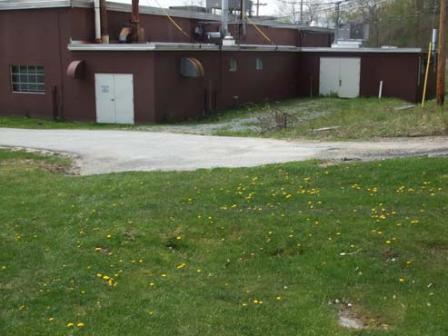Superfund Sites in Reuse in Vermont
If you are having trouble viewing the map in your browser, click the 'View larger map' link below
Elizabeth Mine
The Elizabeth Mine Superfund site is located in Strafford and Thatford, Vermont. The site contains waste rock, roast beds and mine tailings left behind after 150 years of mining activity. Mining wastes contaminated the groundwater, soil and sediment with heavy metals and acid-rock drainage. Mining wastes also contaminated the adjacent West Branch of the Ompompanoosuc River, Lord Brook and two tributaries. EPA placed the site on the Superfund program’s National Priorities List (NPL) in June 2001. In 2005 EPA stabilized the tailing pile with soil and repaired the tailing dam, preventing the release of large quantities of mining waste. EPA constructed a water treatment system in 2008. EPA consolidated and covered the mining waste in 2012. During cleanup activities, EPA restored 10 acres of wetland for ecological reuse. In 2014, the U.S. Army Corps of Engineers Sustainability Award Program presented the Green Dream Team Award to the Elizabeth Mine Superfund Site Project Delivery Team for the wetland restoration at the site.
For more information:
- Celebrating Success: Elizabeth Mine Superfund Site, Stratford, Vermont (PDF)(1 pg, 1 MB, About PDF)
- Superfund Site Profile Page
Ely Copper Mine
The Ely Copper Mine Superfund site is located in rural Vershire, Vermont. It is an abandoned copper mine that includes an area of about 350 acres. From 1821 until 1920, copper mining operations generated piles of waste rock, smelter waste and tailings. Operators disposed of the materials on site. Mining operations stopped at the site in 1920, but activities to remove dump-ore occurred between 1949 and 1950. EPA placed the site on the National Priorities List (NPL) in 2001. EPA finalized a cleanup plan for the site in 2011. The design for the cleanup is ongoing. Since 1950, activities at the site have included commercial timber management as well as hunting, snowmobile riding and horseback riding. The site also includes historic mining-related artifacts and provides habitat for several species of state and federal threatened and endangered bats.
For more information:
Pownal Tannery
Beginning in the late 1880s, a woolen mill occupied the 28-acre Pownal Tannery Superfund site in the Village of North Pownal, Vermont. In 1935, operations at the site changed, converting the mill into a hide tanning and finishing facility. After the facility closed in 1988, EPA found contamination in groundwater, soil and sludge at the site. EPA’s emergency cleanup actions included removing contaminated materials, decontaminating the warehouse, demolishing the remaining buildings and placing a cap over the landfill. EPA completed these activities in 1993 and began further site investigations in 1995. In 1999, EPA placed the site on the Superfund program’s National Priorities List (NPL). Further cleanup activities included removing and consolidating wastes below a cap, monitoring, and land and groundwater use restrictions. EPA worked with the Town of Pownal to coordinate the site’s reuse throughout the cleanup process. Funded by a 1999 Superfund Redevelopment pilot grant, the Town developed plans for recreation areas and a new wastewater treatment plant. The treatment plant, completed in 2006, occupies part of the former lagoon area on site. The Town of Pownal reused old forest beams from the former tannery building to build a recycling center and town equipment shed. The site also provides recreational opportunities for the local community including a small park, benches, a historic marker near the North Pownal Bridge, and walking paths in the former lagoon area.
For more information:
Tansitor Electronics, Inc.
 Tansitor Electronics, Inc.
Tansitor Electronics, Inc.
The 44-acre Tansitor Electronics, Inc. Superfund site is located in Bennington, Vermont. About 36 acres of the site are located north of Route 9 and the remainder south of Route 9. Vishay-Tansitor operates a manufacturing facility on the northern part of the site. Forested wetlands cover most of the site south of Route 9. Since 1956, various owners made electrical components on part of the site. In 1981, Vishay-Tansitor notified EPA that operations between 1956 and 1979 had disposed of organic solvents and acids at the site. Disposal practices contaminated soil, sediment, groundwater and surface water. EPA placed the site on the Superfund program’s National Priorities List (NPL) in 1989. The selected cleanup plan included a waiver of groundwater standards for a 10-acre area of the site. The cleanup plan also included steps to address certain monitoring results, and restrictions on groundwater use. Outside the 10-acre area, all cleanup goals continue to be met. EPA took the site off the NPL in 1999. Groundwater monitoring is ongoing. Vishay-Tansitor continues to operate a manufacturing facility on site.
For more information:
